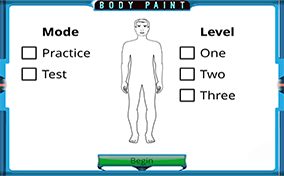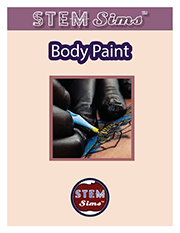Here are some definitions to help you in your investigation.
External - the outside of something
Internal - the inside of something
Anatomy - the study of living things’ parts
Structure - a part on a living thing
Function - what a part does for a living thing
What is anatomy?
Anatomy is the life science that studies the shape and structure of the various parts of an organism. Anatomy is generally divided into two major branches. Microscopic anatomy uses an optical device to view and study cells and tissue. Gross anatomy refers to the study of structures that can be seen with the naked eye and without the aid of an optical device.
What is physiology?
Physiology is the life science that studies the function of the various anatomical parts that make up an organism. Physiology investigates how cells, tissues, organs, and organ systems carry out the basic physical and chemical processes that keep the organism alive. Maintaining homeostasis and communication within and between the various body systems are key components in the study of physiology.
What is homeostasis?
Organisms are exposed to a variety of environmental conditions that could potentially damage their bodies. Homeostasis describes the processes by which an organism maintains a balanced internal environment regardless of what’s happening outside the organism’s body. For instance, if a person is exposed to high external temperatures, the person’s body takes steps, such as sweating, to reduce the body’s potential temperature elevation.
What is metabolism?
Metabolism is a term that describes the wide variety of chemical reactions that occur inside the organism to help maintain homeostasis. The human body has three major metabolic functions: 1) to process and remove body wastes, 2) to convert "food" building blocks to make needed substances, and 3) to convert "food" to energy required for necessary body functions. The body accomplishes these functions through both catabolism, which is the chemical and/or physical breakdown of food into different substances, and through anabolism, which is the combination of building blocks into new substances.
How are the structures of the human body organized?
Atoms, ions, and molecules are the building blocks of living cells. Cells are the building blocks of all living organisms. The cells of the human body come in a variety of shapes and specialized functions. Cells that have similar functions and structures are grouped together into tissue. Tissues are the building blocks of organs. An organ is a collection of similar tissue with a specific function. Organs are the building blocks of organ or body systems. For instance, muscle cells make up heart muscle tissue. The heart muscle tissue along with fat, nerve, and other tissues make up the organ called the heart. The heart organ along with veins and arteries make up the body system called the circulatory system.
What are the major human body systems?
The following are some of the major systems that make up the human body: skeletal, digestive, circulatory, respiratory, endocrine, muscular, nervous, and reproductive. Although these systems are often studied in isolation, many of the systems are integral to the workings of the other systems. The skeletal system provides structure and support to the body. The digestive system breaks down and absorbs food taken into the body. The circulatory system brings oxygen to cells and removes wastes from the cells. The respiratory system connects the outside world containing air to the circulatory system so oxygen may be extracted from air and brought to the cells. The system also releases waste products, such as carbon dioxide, from the cells into the external environment. The endocrine system produces and releases chemical substances that regulate the operation of the body. The muscular system provides movement to the body. The nervous system directs the operation of the other body systems and allows communication within and between these systems. The reproductive system provides the body with structures and substances necessary to produce offspring.
 The human body is a marvelous machine designed for a wide variety of functions. The first step in understanding the workings of the body is to master the names of the various structures. In this investigation, you will experience the systems and their components that make up the organism we call a human being.
The human body is a marvelous machine designed for a wide variety of functions. The first step in understanding the workings of the body is to master the names of the various structures. In this investigation, you will experience the systems and their components that make up the organism we call a human being.

